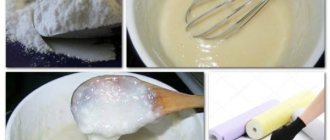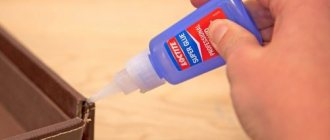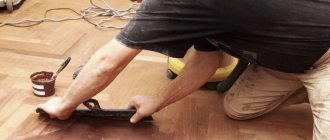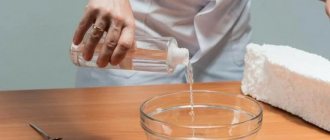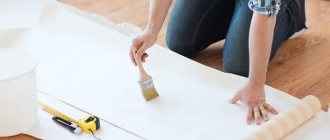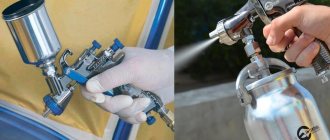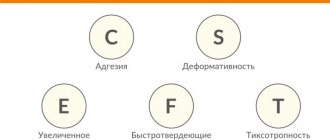What is Conductive Adhesive
Glue is a viscous substance that is used to join a variety of materials. There are many types of adhesives, each of them has its own characteristics and properties. Among the most popular are stationery (PVC for papers), linoleum (for flooring), conductive (for various electrical circuits and mechanisms).
Photo - Conductive glue.
A conductive two-component adhesive must have the following features:
- Dry quickly, this is necessary for speed of work;
- Have a knitting consistency so that parts of the pattern that do not need to be glued are not damaged during processing;
- Have high adhesion and resistance;
- If you want to use a soldering compound, then you need to choose a heat-resistant glue;
- Be safe for the environment and workers.
This substance is necessary for repairing electrical circuits (keyboards, consumer electronics), constructing various heating mechanisms, floor coverings (warm floors, tiles, glass), etc.
Photo - Elast.
You can buy conductive glue without any problems at any construction or electrical store, the average price is from 100 rubles per 25 grams. At the same time, taking into account the consumption, we see the following picture:
- For PVC coatings, the consumption is approximately 250 grams per square meter;
- Non-PVC (textiles, metal) – 400 grams.
It is much cheaper to prepare conductive glue yourself, especially since the components can be bought at any radio store. Let's look at the most popular recipes.
Where is glue used?
It has found application in almost all industries due to its properties:
- - low electrical resistance,
- — quick drying (allows you to avoid long pauses in work),
- — elasticity (allows the glue not to spread and makes it possible to apply it pointwise),
- - the ability to connect materials of different structures,
- - good sealing,
- - retains its properties during temperature changes,
- - does not harm human health.
Conductive adhesive is used:
- — repair of computer boards and gadgets,
- - car electrical repairs,
- — gluing heating filaments on car windows,
- - repair of radio devices,
- — installation of heated floors and heating baseboards,
- - fixation of antistatic linoleum,
- - replacement of LED soldering,
- - for soldering elements where it is impossible to use a soldering iron,
- - for “soldering” small elements,
- — connections of dielectrics through which communication will take place,
- — restoration of conductivity in damaged areas of devices (remote control buttons, keyboards),
Important! Conductive glue is safe for humans, however, in case of direct contact with skin, it should be washed thoroughly with detergent and warm water.
Necessary properties of electrically conductive adhesive
A mandatory element in the glue is powdered nickel or fine silver. Alternatively, crushed palladium can be used. The listed components give the composition characteristics of electrical conductivity. The higher the content of an element in a substance, the better the conductivity properties, but the strength of the connection decreases.
To impart good elasticity, without compromising other characteristics, a polymer binder is added to the adhesive composition. The component also provides reliable adhesion to the surface and reduces density. Any type of conductive adhesive must have the following properties and features:
- dry quickly after application to the surface for faster work;
- have a viscous structure so as not to damage microcircuits and other elements during use;
- have high surface adhesion and resistance;
- do not cause harm to people and the environment.
Features and Properties
The first electrically conductive compound was developed by Germany at the beginning of World War II. Initially it was used only in mechanical engineering. Over time it became universal. Now it is used as a solder when laying heated floors and heating systems, which is due to the ability of the adhesive solution to withstand high temperatures.
- It dries quickly, so gluing must be carried out without interruption.
- It has a high viscosity, which prevents the mixture from flowing into the boards.
- High adhesive characteristics ensure reliable adhesion to the surfaces being processed; it is well fixed on glass, plastic, etc.
- After drying, it can withstand temperatures up to +160 °C while maintaining its structure.
- Safe for humans and nature.
- The elasticity of the composition allows for spot application.
The conductive composition has low electrical resistance. Its use helps protect parts from damage, shock and vibration loads. Thanks to the conductor adhesive, the boards will not react to temperature changes.
Before use, you need to carefully study the composition of the glue and do not use products containing water. The composition and instructions for use are indicated on the original packaging of the glue. For microcircuits, wire contacts, cables, and other electrical elements, the water base is destructive. This composition will take a very long time to dry.
The current-carrying component in the adhesive is often graphite or nickel powder, silver or any other metal. The higher the content of the electrically conductive component, the worse the adhesion of the glue to the surface.
Purpose:
- you can repair computer cables and microcircuits;
- used when installing heating baseboards;
- used as linoleum adhesive when laying antistatic flooring;
- Defects in car electrical systems are eliminated, rear window heating is repaired;
- piezoelements are fastened in radio equipment;
- used when replacing the soldering of light-emitting diodes.
Work with conductive mixtures takes place indoors to minimize environmental pollution.
Areas of application
Amateur radio circuits and homemade designs. In confined spaces, it is difficult to manipulate the soldering iron and solder. Some chips and other expensive electronic components are damaged when overheated. These and other practical problems are solved with the help of conductive adhesive compositions. Examples:
- fastening of piezoelements in radio equipment;
- restoration of heating “strips” on the rear window of a car, torn tracks of printed circuit boards;
- connecting miniature parts while simultaneously creating a conductor;
- reproduction of cold soldering technology.
If necessary, conductive varnish will provide protective functions. The application of such adhesive compositions is used to create “flat” heating elements of a heated floor system.
How to make conductive homemade glue
A very common method is where graphite plays a major role. You need to buy the cheapest quick-drying glue (“Moment”, “Elephant”, “Second”) or varnish. Carefully unscrew the foil from the back of the tube, do not damage the seal on the lid. Now we need a soft pencil M4 or M2. We take the lead out of the pencil, knead it thoroughly to the consistency of powder and pour it into a tube of glue. Use a long match to mix our composition and twist the foil; be sure to secure it at the bottom with pliers so that the adhesive does not leak out during operation.
Types of Kontaktol glue
Electrically conductive adhesive Kontaktol is a product of the famous Keller concern (Germany). The manufacturer offers the following modifications:
- “on silver” – a one-component composition based on purified silver for creating electrically conductive tracks on textolite and other solid substrates;
- “Radio” glue is created with a graphite filler, so it is cheaper compared to the previous version;
- The adhesive marker is made of silver powder with PVC filler - this solution simplifies the handling of the restorative agent in difficult working conditions.
For your information. After hardening, Kontaktol electrically conductive glue creates a moisture-resistant “path”. Standard containers are 2, 5 and 10 g. Resistivity is 0.01 Ohm per cm3.
How to make conductive glue with your own hands?
Below are some simple recipes for making conductive glue, gel or lubricant. There is nothing complicated in this process. The only difficulty is finding the necessary components of such glue for contacts.
Recipe one
This recipe for making conductive glue with your own hands is the simplest. For people who don’t really want to spend a lot of time making it, this method is definitely suitable. So, the conductive glue will be based on ordinary superglue in a tube. It can be purchased at many hardware stores and markets. Superglue has certain features that will ensure the creation of a conductive adhesive. Firstly, graphite powder dilutes extremely well in superglue. Secondly, it should be noted that in large volumes this glue hardens rather slowly.
As has already become clear from the above, to make conductive glue you will need graphite powder. There is no need to worry about where you can get it, since it is easy to obtain by chopping the lead of an ordinary pencil. To do this, you can use sandpaper or a file.
Additional Recipes
Graphite dust is not the only component that can be used to prepare conductive adhesives. There are several more complex mixtures that have better electrical conductivity or adhesive properties:
- A mixture of silver powder (130 g) and graphite (12 g) are conductive components, and the binders are nitrocellulose (8 g), acetone (50 g) and rosin (3 g). In the order listed, everything is mixed in a mortar until smooth and the glue is ready. If the glue thickens, it must be diluted with acetone. This composition is more designed as conductive - you should not expect it to hold any parts like glue.
- Graphite (30 g) and silver (70 g) powder, acetone (70 ml) and vinyl chloride-vinyl acetate (60 g) - after mixing, they become a syrupy conductive liquid with adhesive properties. Store in an airtight container to prevent the acetone from dissipating. Use it to dilute the mixture if it thickens.
- The powder from the graphite rod of the AA battery and the ceponlac are mixed until a creamy mixture is obtained.
Self-production
Electronics repairers have to use large quantities of electrically conductive adhesives. Therefore, due to the high cost, many try to make an analogue of store-bought glue at home. A homemade product will serve no worse than a purchased one, but it is important to strictly observe the proportions when creating it.
Graphite based
The easiest way is to make your own glue from graphite. For this, graphite powder itself and nail polish (glue) are used. First you need to buy all the necessary ingredients: the cheapest clear varnish or liquid or paste for gluing false nails will do. The procedure for making glue is as follows:
- carefully unscrew the foil on the glue from the back of the tube (if you purchased glue and not varnish);
- take a simple pencil, remove the lead;
- grind the lead to a fine powder;
- combine with varnish or glue directly in a tube or bottle;
- mix the finished product with a toothpick;
- Tighten the foil again and secure the tube from the bottom using pliers.
Unfortunately, such a product can dry out if the tube is not tightly closed, so you need to prevent air from getting in. Colored varnishes are not suitable, as they contain paint that can disrupt the conductive properties of the glue. But unsuccessfully applied product can be easily removed with acetone or nail polish remover.
Instead of a pencil, you can take graphite yourself from unnecessary copper-graphite brushes and salt batteries. It is possible to turn graphite into a powder mass using sandpaper or a needle file. After grinding the carbon rod of the battery or brushes, the powder is mixed equally with tsaponlak, achieving a creamy mass. By the way, the use of brushes will be an order of magnitude more effective, because the addition of copper seriously increases electrical conductivity.
Silver based
Adhesives on silver are much more difficult to manufacture than on graphite. However, craftsmen also often make such products if they have all the necessary components. To work you will need:
- formalin 1%;
- silver nitrate;
- ammonia (ammonia).
You should measure out equal parts of silver and formaldehyde and combine them together. You just need to add a couple of drops of ammonia to this mass. After a few minutes, a sediment will appear at the bottom of the dish - silver powder. To get it out, you need to filter the liquid. Next, the powder must be dried at +120…+150 degrees. It is introduced into any transparent glue or varnish, as in the previous recipe. Before joining the components, a little alcohol is dripped into the glue to dilute it.
There are other recipes for preparing a conductive composition that include graphite and silver together:
- Take 130 g of ready-made silver powder, 12 g of graphite powder. Connect them together, then add 8 g of nitrocellulose, 50 g of acetone, 3 g of rosin. If the mixture is too thick, you can also dilute it with acetone. After mixing, the product can be immediately used as a conductive composition, but it practically does not glue parts (usually it is applied as an electrically conductive primer).
- Combine 30 g of graphite, 70 g of silver powder. Pour in 70 ml of acetone, 60 g of vinyl acetate. When thoroughly mixed, a syrup with conductive properties is obtained. It can be used as a coating for other adhesives, for example BF.
Aluminum glue
This metal also has excellent electrical conductivity characteristics. Epoxy resin is usually used for the binder component. Since it quickly undergoes a polymerization reaction when a hardener is added, aluminum must be added to the resin before mixing with the liquid substance. You need to take aluminum powder and mix it with the resin until you get a mass with the consistency of sour cream. It must be given uniformity, the required amount must be measured and combined with the hardener in a ratio of 1:10.
Choosing glue in the store
Construction and hardware stores have a very wide selection of factory-made electrically conductive glue.
Contactol
The adhesive produced under the Kontaktol brand is an innovative development of the German manufacturer Keller. The product is intended for mounting microcircuits, repairing tracks on printed circuit boards, and eliminating defects on contacts in electrical appliances. The substance sets quickly, and after 5-7 hours absolute polymerization occurs. To speed up the hardening process, it is allowed to warm up the treatment area with warm air.
Permatex
Permatex glue (Permatex) is a two-component composition for the restoration of heating contacts. The connection made is resistant to vibration loads, not subject to ultraviolet radiation and temperature changes. It is better to work with glue at an ambient temperature of at least 10 °C.
TPK-E
TPK-E adhesive is used for gluing aluminum products, stainless steel and carbon fiber together and in various combinations. Solution treatment helps ensure electrical connection with transient resistance. Thanks to its consistency and composition, the product removes static charges from the material.
Forbo 615 eurostar lino el
Floor coverings (linoleum, carpet) are “slung” onto Forbo electrically conductive glue. This is a translucent composition without a characteristic odor.
DoneDeal
DoneDeal glue from an American manufacturer has good adhesion to most materials. The product is water resistant and suitable for repairing water transport. If the rules of use are followed, the strength of the adhesive seam exceeds the strength of the material being processed.
Homakoll
It was developed specifically for gluing floor coverings that are produced in rolls and have a fabric or fleecy backing.
- The composition contains no toxic or volatile components.
- Minimum water content.
- Does not shrink after complete drying.
- After initial adhesion to the surface, the likelihood of shifting and peeling is minimal.
- Easy to apply with a notched trowel.
- Incombustible.
Mastix
Mastix adhesive based on nickel powder. It is used for the restoration of rear window heating threads in cars, filling gaps, cracks and holes, and gluing metal. The characteristics are similar to cold welding.
It is permissible to work at low and high temperatures. The quality of the connection in both cases does not decrease.
VolgaKhimProm
Restoration and reinforcing composition. Complete hardening, depending on the thickness of the applied layer, occurs in a maximum of an hour. Used in everyday life and industry. The glue is safe, without harmful effects on human skin, respiratory tract and mucous membranes.
Other brands
- Conductive adhesive Abro Masters. Produced in the United States of America. Repairing the rear window heating filaments.
- Forbo 523 adhesive for gluing linoleum and other floor coverings. Refers to dispersion compositions, frost-resistant, odorless, does not contain solvents.
- Baku BK 426 is an electrically conductive paste for restoring traces on microcircuits.
- Astrohim. Used in repairing glass heating filaments.
- Irpol 5. Elastic composition based on polyurethane components. Bonds antistatic floor coverings.
- Elekont. Epoxy resin based adhesive. Used when repairing a car. Ineffective, sometimes the application has to be repeated.
Store-bought electrically conductive glue
Of course, home-made conductive paste can be more profitable than its store-bought counterparts, but it has a very limited margin of safety. Moreover, none of us is immune from mistakes; It is possible that a mistake was made during the production of the glue, which could damage expensive equipment. If you are not completely confident in your abilities, then store-bought glue can also be a great option. For example, “Kontaktol”.
The composition of this glue is low-viscosity and resembles a paste and is made on the basis of epoxy, polyester and other synthetic resins, and silver, gold or palladium powders make it directly electrically conductive. It is not that expensive: 190 rubles. However, when buying it you should be careful: recently cases of sales of counterfeits have become more frequent, so it is better to contact the seller with guarantees.




